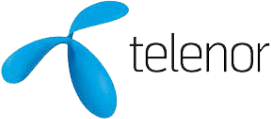The Colourful World of WDM: Exploring the Rainbow of Data Streams
Trusted by:


















Just as a rainbow splinters light into a spectrum of colours, Wavelength Division Multiplexing (WDM) technology dissects data transmission into various wavelengths, each representing a unique data stream. WDM technology has revolutionized data transmission, making it faster, more efficient, and akin to the natural wonder of a rainbow.
Recapping: Wavelength Division Multiplexing Explained
WDM is a method used in fiber-optic communication, where multiple data signals are transmitted simultaneously on the same fiber optic cable. Each signal is carried on a distinct light wavelength, or ‘colour.’ It’s akin to multiple radio stations operating at different frequencies but using the same airwave channel.
The Spectrum of WDM
Red: Long-Distance Communication
In WDM, red wavelengths, lying at the lower end of the spectrum, are often used for longer-distance communications. They experience less attenuation (signal loss) over distance, making them ideal for intercontinental data transmission. For instance, undersea cables linking continents might predominantly use these wavelengths.
Orange and Yellow: Intermediate Communication
Orange and yellow wavelengths are typically employed for intermediate distances. These wavelengths strike a balance between bandwidth capacity and attenuation, ideal for regional data networks. A common example would be broadband internet services that use these wavelengths to deliver high-speed internet to your home.
Green: High-Speed Networks
The green part of the spectrum, being in the middle, is often used for higher bandwidth and speed. These wavelengths are perfect for dense urban networks, where large amounts of data must be transmitted quickly over relatively short distances.
Blue and Indigo: Ultra-High-Speed Data
Towards the higher end of the spectrum, blue and indigo wavelengths are used for ultra-high-speed data transfer. They are often employed in scientific and military applications, where rapid data transmission is crucial.
Violet: Specialized Communication
Violet wavelengths, being at the extreme end, are often reserved for specialized communication needs. They are used in precision applications like medical imaging and high-resolution scientific sensors.

Everyday Impact of WDM
- Internet and Broadband: WDM enables high-speed internet connections. Each ‘colour’ carries different data streams, allowing more users to browse, stream, and download simultaneously without congestion.
- Telecommunications: Telephone networks utilize WDM to manage multiple calls and data transmissions efficiently.
- Television Broadcasting: Cable TV services use WDM to offer a wide range of channels, each transmitted on different wavelengths.
- Cloud Computing and Data Centers: WDM is crucial in data centers, supporting the massive data flow needed for cloud storage and computing services.
- Medical and Scientific Imaging: In advanced medical imaging and research, WDM allows for high-resolution data transmission, crucial in diagnostics and scientific discoveries.
VC4 and WDM – A colourful outlook for Network Inventory Management
The colorful world of WDM technology is not just a parallel to the natural beauty of a rainbow but a vital backbone of modern communication. By assigning different data streams to various ‘colours’ or wavelengths, WDM efficiently manages the ever-growing demands for data transmission, touching almost every aspect of our digital lives.
WDM is a network type supported by VC4, a leading provider of Network Inventory Management through its software IMS. It enables you to take control of your data, eliminating silos and providing a single view of all assets and relationships. Supporting any generation of technology, VC4-IMS helps you to plan new investments more efficiently and seamlessly integrate operations, end-to-end.
Of course this is not the only network type that VC4 supports. Networks include but are not limited to: OTN, MPLS, SDN/SD-WAN, FTTx / GPON, Fiber including full GIS, Mobile Core and RAN, SubSea, Microwave and more.
VC4 has a deep knowledge and understanding of WDM, DWDM, CWDM and has consolidated this handy information not only in a number of blogs, and also a useful whitepaper on OTN which can be downloaded for free by clicking here. If you would like to know how VC4-IMS can support your WDM journey, then get in touch with us today. Our team is always ready to assist.



